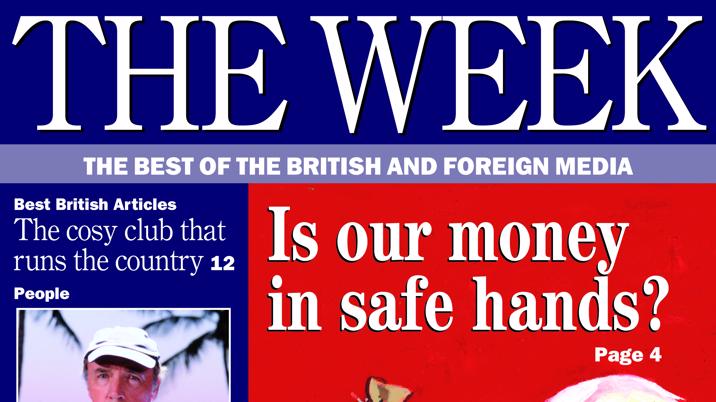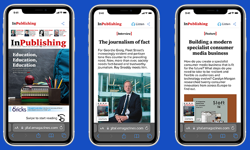
I used to believe that it was impossible to be truly interested in a subject - cars, fashion, music, photography, fishkeeping, - without reading a magazine about it. The purchasing of a magazine seemed a token of earnestness, a badge of commitment, the sign of someone who had gone past the casual interest of most people who happily sit and watch Top Gear or Later With Jools Holland but would never dream of describing themselves as a petrolhead or a music fiend.
Here is my confession. I'm not sure I think that anymore.
The internet, the newspapers and even free media have all flooded into the space that used to be occupied by magazines and magazines alone. For many, quite engaged people all these more than adequately satisfy their demand for information, diversion and entertainment. Does this mean the end of magazines or anything like it? Of course it doesn't, as the annual convulsions of the ABC figures continue to prove.What it does mean is that the old way of sizing up prospective magazine readers won't do anymore. It no longer suffices to say "interested in tractors? Then allow me to introduce you to Tractor Monthly". The old link between the interest and the print reflection of that interest has been interrupted by other media and by the increasing complexity of people's lives and consumption patterns. This leaves publishers to ask themselves the question, what's a magazine for? What does it do? What sort of part does it play in people's lives? What is the difference between the people who can't do without it and the people who pass by on the other side?
Nobody has the nerve to move their magazines to the next level.
Old news
Not so long ago, the weekly Motor Cycle News would employ people on a Sunday to get on the phone and compile the results of road races held up and down the country over the weekend. The paper went on sale on Wednesday, at which point hard core readers would eagerly devour it for information that was still, three days later, news. We don't wait that long for anything nowadays. Music business PRs used to give the news editor of the NME the details of an upcoming tour on a Friday, knowing that nobody else would carry that information before the NME hit the streets nationally the following Thursday.
That's all gone. Nowadays, information moves like water. It doesn't flow exclusively down the accepted channels it formerly did. It seeps through 24 hour news channels, via a million internet sites, through peer to peer networks, through text alerts and without the aid of media at all - simply through the increased ease of person to person communications facilitated by the mobile and email. The minute a PR emails a news release it has been published. It is used news.
What people value is the experience of reading the magazine as much as the magazine itself.
The magazine experience
Consequently, the idea that you can pick up even a weekly magazine and be acquainted with a piece of information that you don't already know is pretty far-fetched. Of course, magazines adapt. It's amazing that weeklies like Heat and Now manage to survive, let alone flourish in an era where they're working turf that is already being patrolled by the squadrons of the tabloids. But, by majoring on the gloss, the language and humour that they share with their readers and the fact that instead of one picture they can provide six pictures arranged in a sequence like a strip out of the Beano, they provide a reading experience that you can't get elsewhere.
That's why pacing and tone is so much more important in a magazine than it is in a newspaper. That's why magazine editors spend their time staring at the page plan and playing with headlines rather than barking "get me a scoop!" into a bakelite telephone. Over the last ten years, editors have probably got as good at packaging the experience as they're ever going to get. People are reading the context as well as the content. The long pieces are increasingly there to justify the cover and the value for money. People like to feel they're there if they want it. The short pieces up the front are there to be read by everybody. Give them a good opening number, as Oscar Hammerstein said, and they'll forgive you anything after that.
Editors have probably got as good at packaging the experience as they're ever going to get.
The editorial choice
It's in the balancing of the requirements of the people who come wanting their greens - the big in-depth interview, the comprehensive guide to the skirts in which the bum doesn't look too big, the motoring magazine guide to the 100 best family cars - with the people who are just looking for something to skim, the potential buyer dallying at the newsstand, that's increasingly under pressure as people make it clear that they have other places to go for the detailed information. In this new world, does an editor go deep or go wide? If you're editing a travel magazine, do you devote most of your pages to the places people dream about going but will never go or to how to get more out of the places you have already decided to visit?
As attention spans appear to get shorter, monthlies find themselves in a more difficult place. At the moment, they're still wedded to the tactics that built circulation for them in the ’90s. For men's magazines, this means the best starlet they can persuade to appear in lingerie. What they're finding is that the thing you need for your cover - a recognisable name - is likely to deliver a lot less in revelation than in times past and is likely to deliver diminishing returns for the reader. However, nobody has the nerve to move their magazines to the next level, to be prepared to take their hard core readers on a journey of discovery rather than a trip round the old familiar sights. I am a devoted reader of the New Yorker, not only because I appreciate the quality of the way it's done but also because it persuades me to read about things I don't know anything about. Is it possible that is part of the future for magazines? Magazines have to move. They can't keep running on the spot.
The old way of sizing up prospective magazine readers won't do anymore.
Reading habits
It's not easy to decide. The one thing we do know is that we're not likely to alter people's habits. We simply have to be more shrewd in keying into the habits that are already there. The young women's weeklies benefit from the fact that their core reader, the young, single, commuting female, has a daily routine into which a thin but pacey weekly falls quite naturally. These are the girls who don't want to read newspapers on the bus or tube and who regularly spend an hour a day in transit. The success of those titles resides in their understanding of the habit of reading rather then the things that are being read about.
Whenever you do research into women's magazines you find that people tell you two things: a thick, ad-stuffed glossy is "a treat"; a thin, gossipy weekly is "a break". The former is like having your maid draw a bath for you and fill it full of scented oils, the latter is like a cappuccino and a chocolate croissant grabbed in Starbucks. One is a slow seduction, the other is a quick jolt. What people value is the experience of reading the magazine as much as the magazine itself.
Strong magazines like the Week have a strong sense of the reading experience. All copies of the magazine are delivered on Friday and Saturday and, I guess, are read at the kitchen table on Saturday morning. The experience is reflective, unhurried, setting the week to rights. In the age of 24 hour information, the Week has proved that there is a place for calm assessment of that torrent of information. The balance of the editorial package reflects that perfectly. You read its harrowing assessment of the situation in Iraq and then you look at the pages of Victorian rectories for sale in Dorset and daydream that you could afford them.Pacing and tone is so much more important in a magazine than it is in a newspaper.
Only hearing what we want to hear?
The PPA have just undertaken some research in Guildford. They picked this place because here it was possible to find a cross-section of the British population. They looked at what magazines people already bought and also exposed them to titles that they wouldn't ordinarily have come across. They came back with an optimistic message. Yes, people said, they might be prepared to have bought them if only they had known about them. Well, yes, in the words of Mandy Rice-Davies, they would, wouldn't they?
Ask people whether they are prepared to extend their interests, ask them whether they've got new dimensions to their personalities and interests and they're pretty much bound to say, yes, they have. Makes you sound a bit dull if you don't. But even if you can disrupt their daily routine to the extent of putting them in the right retail outlet in the right frame of mind at the right time and then move them magically to the right area of the news run, it doesn't mean that you can nudge them into buying even one copy, let alone developing the repeated habit. Inertia rules.
Every piece of research leaves you wanting another. The key qualification of a magazine reader is that they value the experience of reading a magazine and are prepared to make time in their life for that experience. Teenagers deserted magazines in droves as soon as the mobile phone experience supplanted the time they used to spend reading. It was nothing to do with what was or was not written on the pages. It was just that something new filled the time. Our research is going to have to get more sophisticated if we're to make sure that the same thing doesn't happen in other areas of the market.
The amount of information and entertainment available to people has grown dramatically but still there are no plans to make the day any longer than 24 hours. Magazine people need to work out how their products fit into that increasingly hard-pressed clock. Then they need to convince their customers that they can provide value for that time. And maybe the first person they should convince is themselves.










